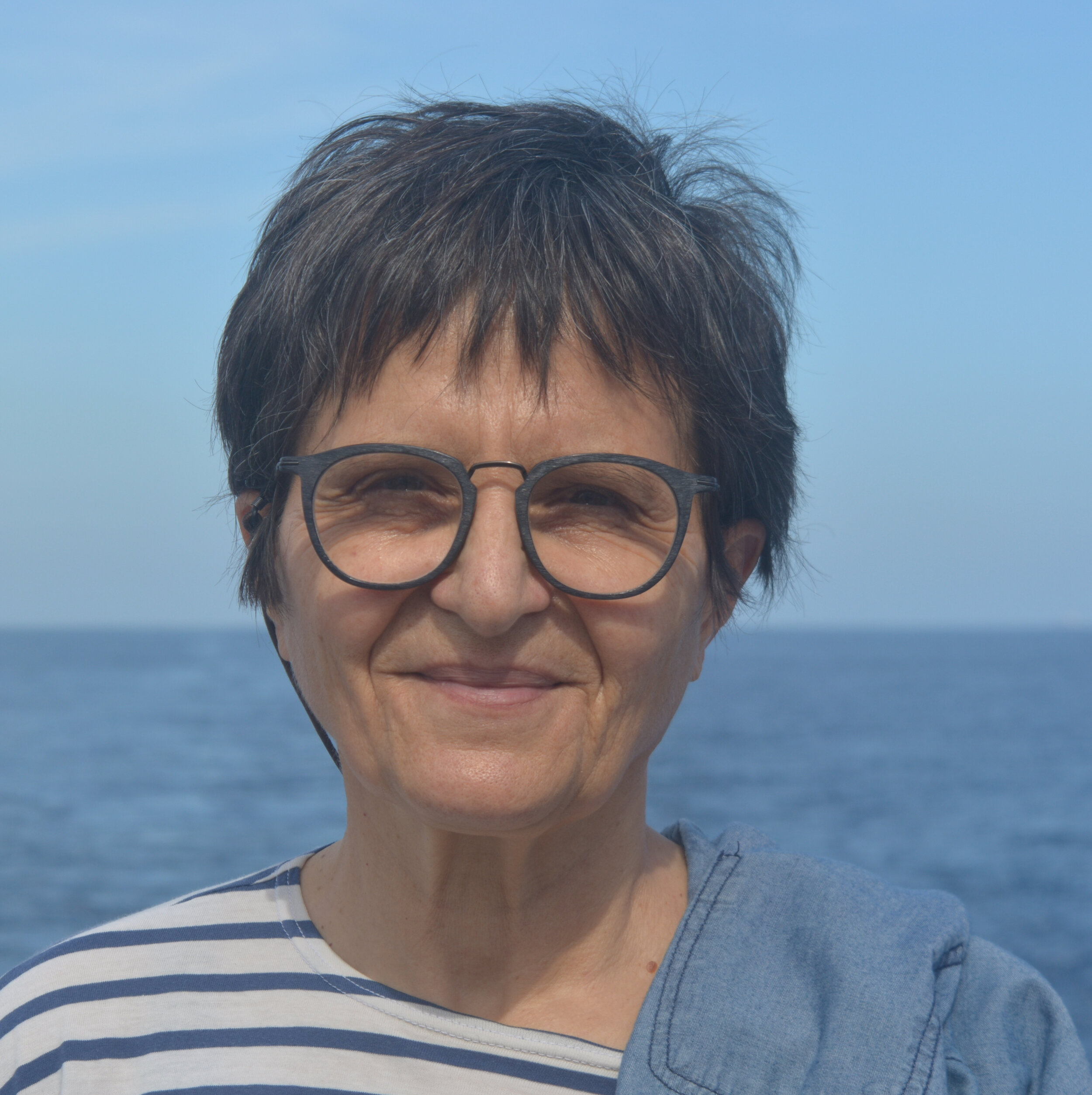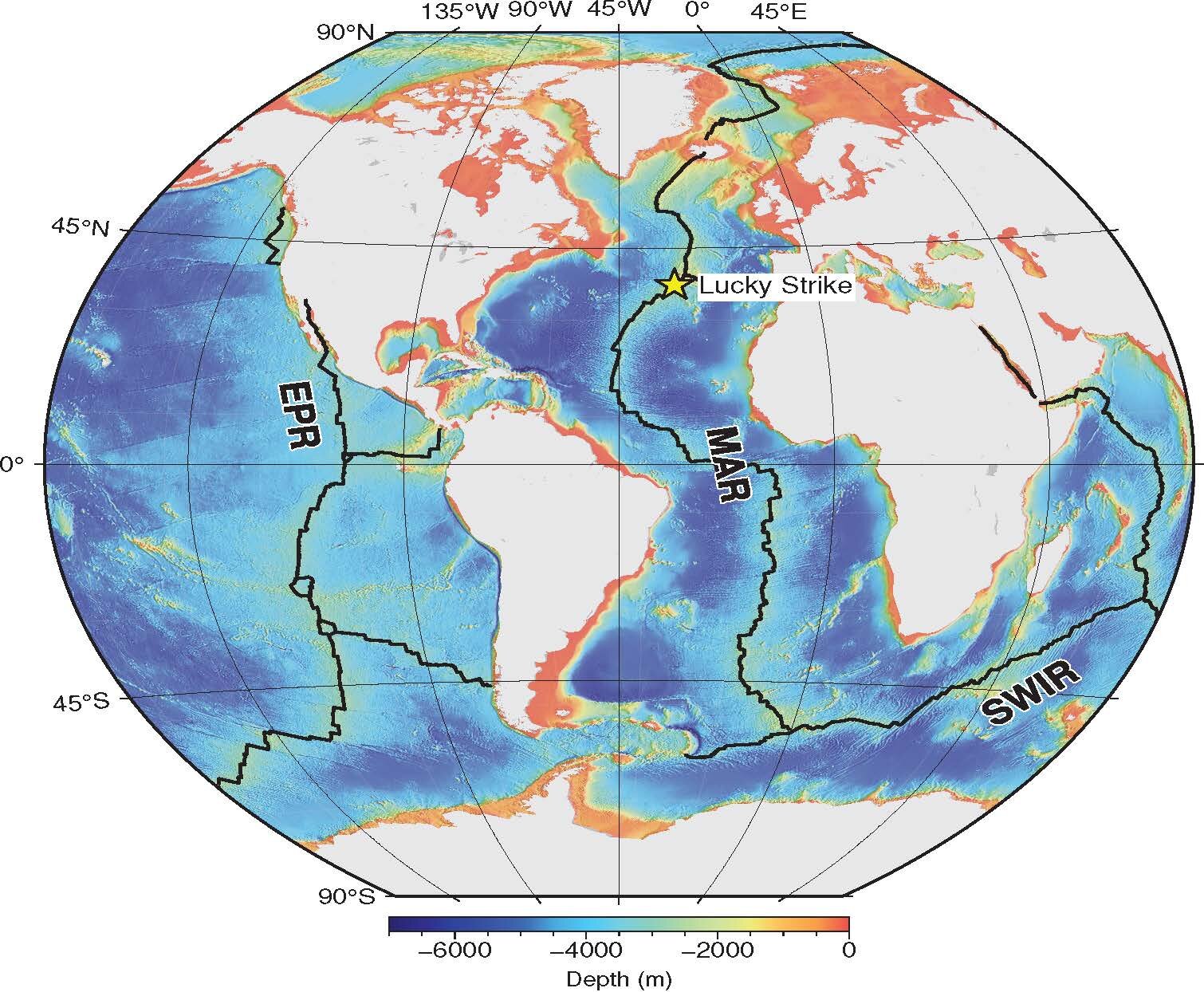Mathilde Cannat on Mid-Ocean Ridges
Mathilde Cannat is a research director at the Institut de Physique du Globe of Paris. Her research on mid-ocean ridges has fundamentally changed our understanding of the geological processes that create new oceanic crust at these ridges. She describes how both volcanism and faulting play a role, their relative importance depending on the spreading speed and supply of melt from the underlying mantle. Especially in slow-spreading ridges, the ridge axis behaves like a factory, underplating a 10-15-km-thick plate with new lithosphere, while faulting acts like a conveyor belt, transporting away the newly formed plate.
Listen to the podcast here or wherever you listen to podcasts.
Scroll down for illustrations that support the podcast. And add your comments at the bottom of the page.
Note - playing the podcast is not supported on Internet Explorer; please use any other browser, or listen on Spotify, Apple Podcasts, etc.
Podcast Illustrations
One of the research vessels Mathilde Cannat used to map mid-ocean ridges, especially in the Atlantic. For several studies, the vessel was used to launch a submersible that carried Mathilde Cannat to the sea floor.
Courtesy of @lfremer-CNRS
Map showing the spreading ridges Mathilde Cannat refers to in the podcast. EPR: East Pacific Rise, a fast-spreading ridge. MAE: Mid-Atlantic Ridge, a slow-spreading ridge. SWIR: Southwest Indian Rise, an ultra-slow-spreading ridge.
The rock succession through the Oman ophiolite, a slice of oceanic crust and mantle from the Tethys Ocean (now disappeared) formed 95 million years ago above a subduction zone and subsequently emplaced onto the continental margin of Oman. The ophiolite section may be a useful proxy for oceanic crust formed at mid-ocean ridges.
Courtesy of Mike Searle
Photo taken from a submersible of mud-covered serpentinized peridotite along an extensional fault at the Southwest Indian Ridge.
A “black smoker” hydrothermal vent at the Lucky Strike hydrothermal field in the Mid-Atlantic Ridge being studied with a temperature probe (right) and a microbial sampler (left).
Courtesy of @lfremer-CNRS
Diagram showing a thin axial lithosphere at a fast-spreading, magma-dominated mid-ocean ridge (top), and a thick axial lithosphere at a slow-spreading, fault-dominated mid-ocean ridge (bottom).
Courtesy of Mathilde Cannat
Diagram of a slow-spreading mid-ocean ridge in which the extension is primarily accommodated by faulting. As the plate is transported up and away along the detachment fault footwall (left), new mantle material rises, cools, and solidifies at the base of the brittle lithosphere, thus maintaining the same thickness as long as the heat balance is unchanged and the line of constant temperature (isotherm) stays fixed.
Courtesy of Mathilde Cannat
Cross section across the Southwest Indian Ridge showing how faulting dominates in this ultra-slow-spreading ridge. Each line is a fault, with the numbers indicating the faulting sequence, from 1 (presently active) to 8 (initiated about 11 million years ago). The divergence of the African plate and the Indian Ocean plates at this spreading ridge is dominated by faulting, with new faults developing every ~10 km, sometimes reversing polarity. Note that the vertical scale is exaggerated.
Cannat et al., 2006, Modes of seafloor at melt-poor ultra-slow-spreading ridges, Geology, 34, 605
Sketch of a spreading ridge showing along-axis variation from spreading that is magma-dominated (yellow/orange) to fault-dominated (green).
Cannat et al., 2019, On spreading modes and magma supply at slow and ultra-slow mid-ocean ridges, Earth and Planetary Science Letters, 519, 223










